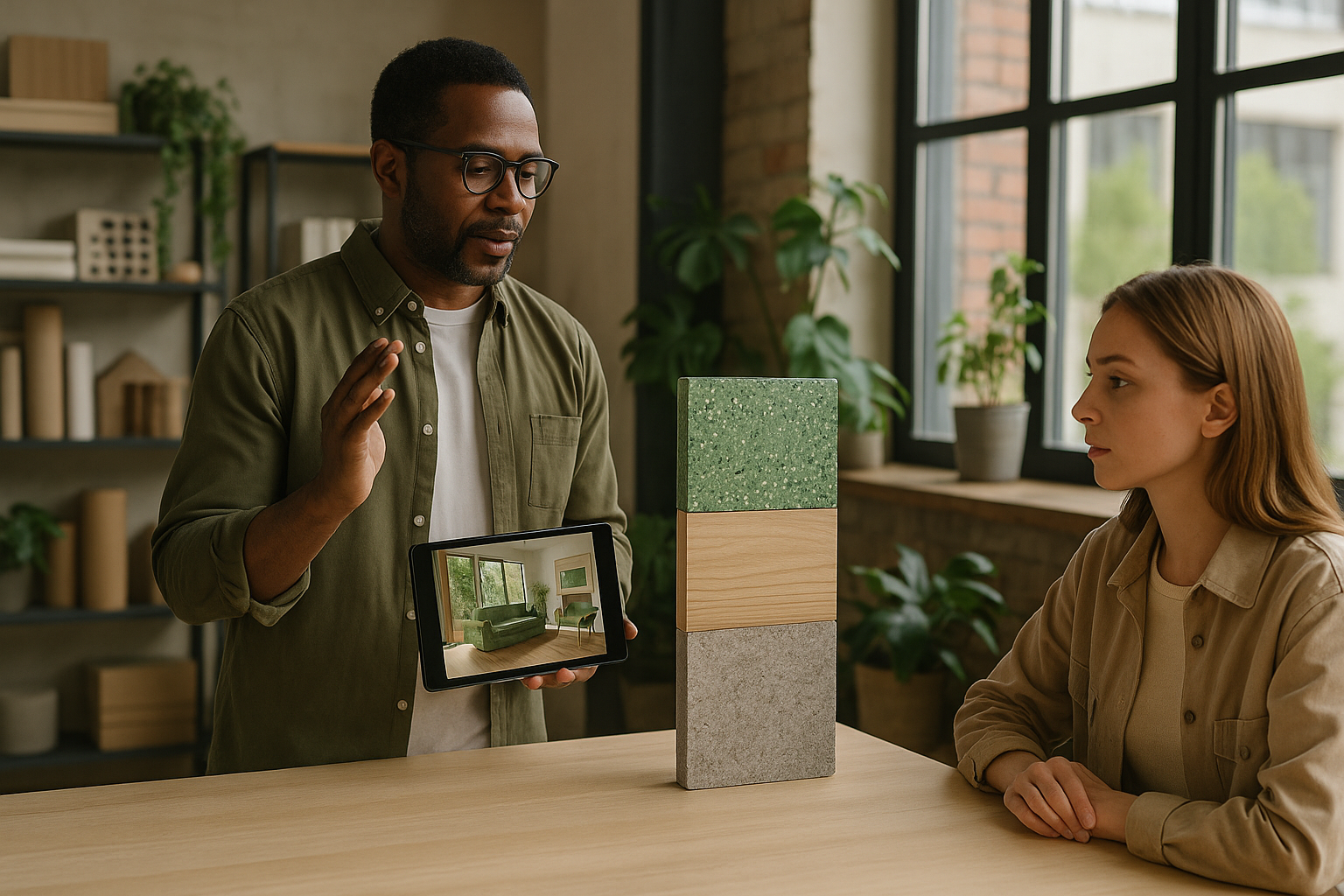As global awareness around climate change and resource conservation grows, interior design is evolving. Clients are no longer only asking for beauty and function—they’re asking for responsibility. That’s where AR and eco-friendly interior design form a powerful alliance.
Using augmented reality, architects and designers can visualize sustainable materials, demonstrate energy-saving layouts, and engage clients with immersive, informed choices. It’s not just about being “green”—it’s about designing smarter, together.
What Is Eco-Friendly Interior Design?
Eco-friendly interior design focuses on minimizing environmental impact through:
- Use of renewable, recycled, or low-emission materials
- Energy-efficient lighting and HVAC strategies
- Modular furniture and long-lasting layouts
- Designing for daylight and passive ventilation
Pairing this approach with AR technology allows both designers and clients to visualize sustainability from day one.
How AR Enhances Sustainable Interior Projects
1. Visualizing Material Impact
Clients can toggle between finishes—say, bamboo vs. hardwood flooring—and see how each option affects both aesthetics and sustainability goals. AR makes these material swaps quick, intuitive, and data-driven.
2. Supporting Energy Efficiency Through Layout
Lighting layouts, appliance placements, and natural ventilation paths can all be simulated in AR. This aligns designing architecture with the principles of green building certifications like LEED or WELL.
3. Reducing Waste with Better Decisions
Reworks and material returns create environmental waste. By previewing everything in AR, designers can reduce errors, enhance stakeholder alignment, and avoid unnecessary material usage.
Real-World Example: Sustainable Office Redesign
A firm in Amsterdam used AR and eco-friendly interior design principles to present a low-carbon office remodel. Clients viewed multiple versions of the conference space—each showing different carpet types, ceiling materials, and daylighting strategies. The result: fewer samples, faster decisions, and a cleaner footprint.
Integrating AR into Your Green Design Workflow
AUGmentecture helps firms align sustainability and interior design by offering:
- Markerless AR for indoor spaces
- Model versioning for side-by-side material comparisons
- Mobile-friendly sharing for remote eco-conscious clients
- Support for major modeling platforms: Revit, Rhino, SketchUp
This reduces the gap between vision and validation—whether you’re planning a living room renovation or a 100-seat eco-conscious coworking hub.
Learn about LEED green building standards →
Why Eco-Aware Clients Love AR
- 🌿 They can see the impact of green choices—visually
- 💬 Conversations shift from abstract to actionable
- 🛠️ They gain confidence in recycled, modular, or low-VOC options
Most importantly, AR makes the process inclusive. Clients feel like partners, not passengers, in creating healthier interiors.
Challenges and Best Practices
While eco-friendly interior design is growing, there are challenges:
- Sourcing detailed AR-ready models for sustainable materials
- Balancing visual fidelity with mobile performance
- Educating clients on lifecycle costs, not just looks
Designers should optimize model size, use callouts in AR for eco-metrics, and always include comparative visuals to tell a clear story.
Conclusion
Pairing AR and eco-friendly interior design isn’t just smart—it’s essential. We’re entering a design era where responsibility and innovation are inseparable. AR allows designers to lead with sustainability and collaborate with clarity.
Whether you’re retrofitting a home or launching a commercial redesign, the tools for impact are already here—and they’re immersive, scalable, and client-friendly.




